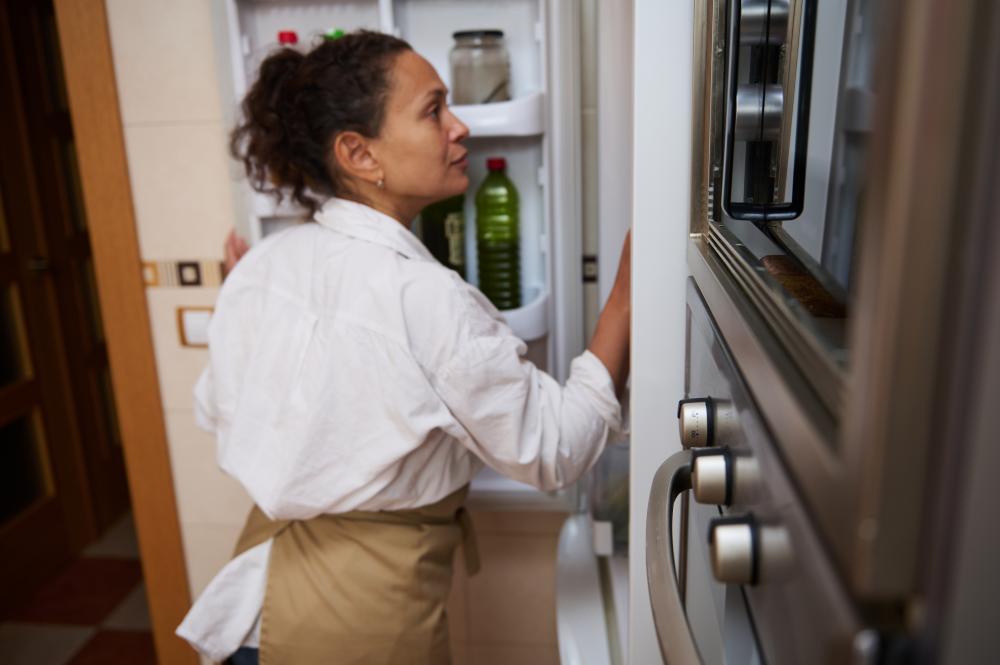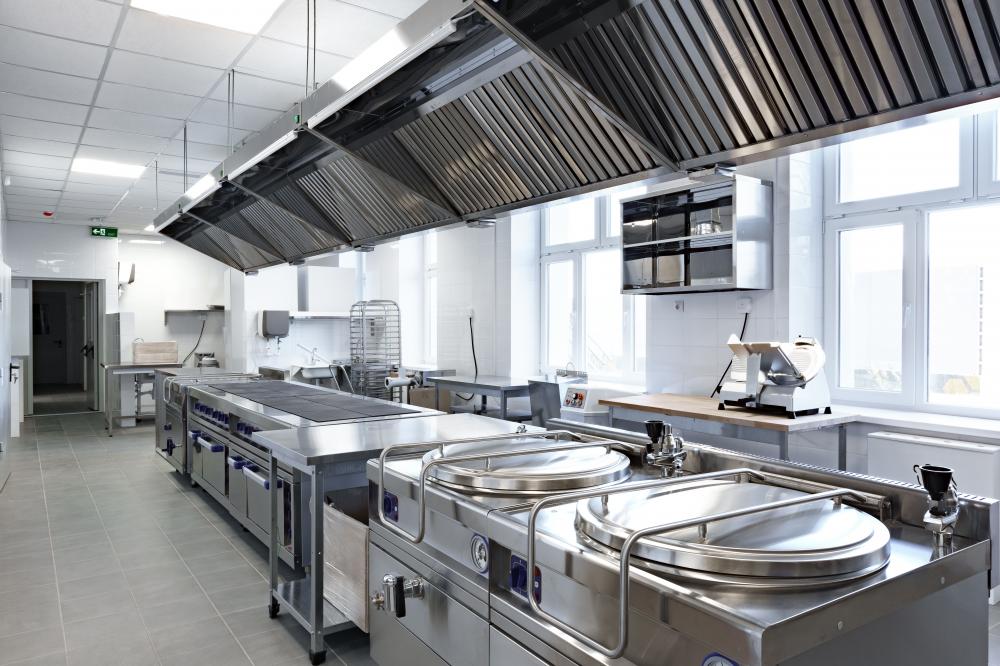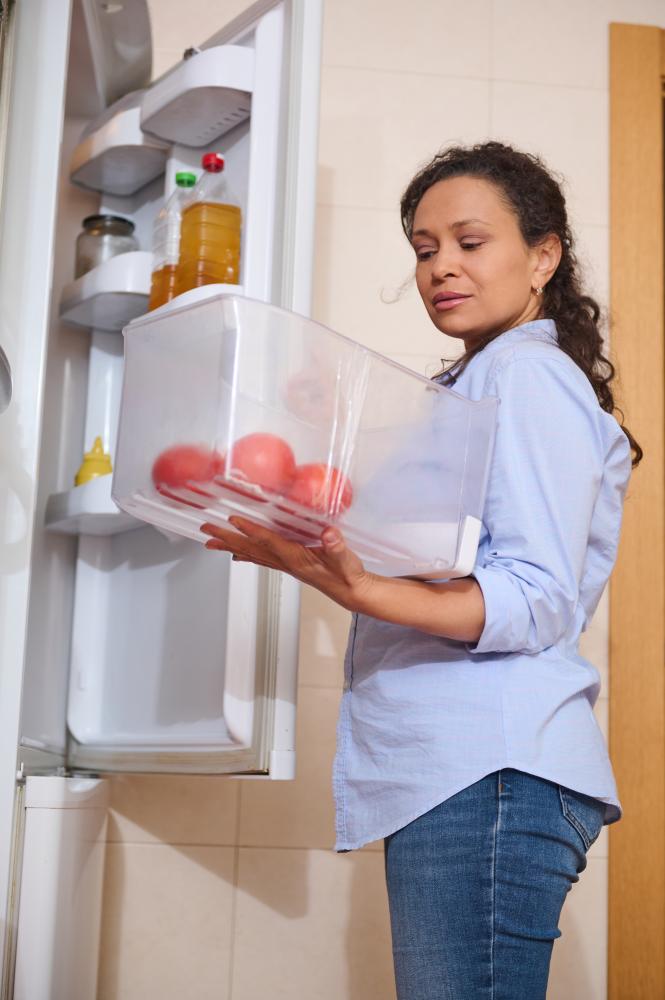
Importance of Temperature Control
Ensuring optimal temperature settings is one of the Best Practices for Using Sub-Zero Refrigerators in Restaurants & Bars. Foods stored at improper temperatures can spoil quickly, affecting both taste and safety. Maintaining a refrigerator temperature of 40°F or below helps slow down bacterial growth, while freezers should be set at 0°F.
A regular check on the settings is crucial, especially after restocking or during seasonal changes. Familiarity with your Sub-Zero model’s temperature adjustments is vital for keeping foods fresh. If adjustments are needed, it might prevent potential issues with spoilage and energy consumption.
Proper Organization and Storage
Efficiency in organization is another of the Best Practices for Using Sub-Zero Refrigerators in Restaurants & Bars. Separating raw meats from ready-to-eat foods minimizes cross-contamination risks. This careful separation can safeguard against foodborne illnesses.
Vegetables and fruits each have sections, optimizing their longevity. By utilizing designated drawers and shelves, you manage inventory better and streamline the kitchen’s workflow. Implementing these practices can enhance food quality and kitchen efficiency alike.
Also, make use of the Sub-Zero’s innovative storage solutions. Features like air purification systems help in keeping your produce fresh longer. Adopting these storage habits often results in less waste and more organized refrigeration units.
Routine Maintenance and Cleaning
Regular maintenance is crucial when employing the Best Practices for Using Sub-Zero Refrigerators in Restaurants & Bars. A clean condenser ensures efficient operation and longevity. Dust and debris can interfere with the cooling system, potentially leading to costly repairs.
For a successful cleaning procedure, always turn off the power. Using a soft brush or vacuum, clean the condenser coils gently. This task could be necessary every three to six months, based on usage intensity and environmental factors.
Beyond physical cleaning, keep an eye on door seals. These should remain tight to maintain energy efficiency. Replacing worn-out gaskets might be needed occasionally to prevent cool air from escaping.
Professional Repair and Support
Leveraging expert repair services is essential when considering Best Practices for Using Sub-Zero Refrigerators in Restaurants & Bars. Our company, NY Sub Zero Service, provides swift and reliable repair services to ensure minimal downtime.
Our certified technicians utilize genuine Sub-Zero parts, guaranteeing lasting performance. Fast response times are a priority, as they enhance your establishment's efficiency and prevent potential revenue losses.
Regular maintenance checks can help detect issues early. Having a professional service agreement might prove beneficial in maintaining appliance health and performance. Knowing you have trusted support ensures peace of mind in your commercial kitchen.
With professional assistance, you can focus more on creating culinary delights, confidently knowing your Sub-Zero equipment is in optimal working condition.

Understanding Commercial Refrigeration Equipment
Commercial refrigeration equipment is vital for any business in the food and hospitality sectors. It includes refrigerators, freezers, ice makers, and merchandising coolers. Each type plays a crucial role in preserving perishable items and maintaining inventory quality. As a technician specializing in high-end brands, I've seen how the right equipment can transform a business's efficiency and product quality.
Choosing the right commercial refrigeration equipment is essential. It ensures that your products remain in optimal condition while minimizing energy consumption and repair costs. We prioritize using genuine parts and expert techniques to deliver exceptional service and durable solutions.
Types of Commercial Refrigeration Equipment
Reach-In Refrigerators and FreezersReach-in models are common in restaurant kitchens. They offer easy access to stored items and come with various temperature settings. These units are ideal for keeping ingredients fresh while ensuring quick retrieval during peak service hours. Our experience shows that proper maintenance of these refrigeration units can significantly extend their lifespan.
Walk-In CoolersWalk-in coolers offer vast storage space, perfect for stockpiling large quantities of produce and meat. They provide easy organization and inventory management, which is essential to avoid spoilage. Our clients appreciate these units for their robust capacity and reliability.
Ice Makers and Merchandising CoolersIce makers ensure a steady supply of ice, crucial for bars and restaurants. Merchandising coolers attractively display beverages and dairy products, enhancing customer experience. Our team ensures these units run efficiently, thereby optimizing performance and energy use.
Importance of Regular Maintenance
Regular maintenance of commercial refrigeration equipment prevents unexpected breakdowns. It involves cleaning, checking temperature settings, and replacing worn-out parts. Our technicians emphasize this as it enhances unit efficiency and prolongs the equipment's life. Regular servicing can also detect potential issues before they escalate, saving on costly repairs.
Moreover, maintenance keeps energy consumption in check—an aspect often underestimated by operators. Keeping gaskets intact and coils clean are simple yet effective techniques to ensure your equipment remains energy-efficient.
Choosing the Right Commercial Refrigeration Equipment
When selecting commercial refrigeration equipment, operators need to consider their specific requirements. Factors like space constraints, cooling needs, and budget are paramount. Our expertise in servicing Sub-Zero products allows us to provide tailored solutions for each client's unique needs.
Using commercial refrigeration equipment that aligns with your business operations supports more efficient workflows. It is crucial to balance capacity and efficiency with space and cost considerations. Our approach is to offer comprehensive advice to ensure the best fit for your needs.
Our clients often seek guidance on integrating energy-efficient systems. Investing in modern equipment may seem costly initially, but the savings in energy bills over time and the boost in productivity make it worthwhile.
Importance of Food Storage Guidelines
Understanding and following food storage guidelines is essential for maintaining food safety. These guidelines help prevent foodborne illnesses and ensure that your food stays fresh for longer. As someone who deals with refrigerators and freezers daily, I see firsthand the impact that proper storage can have on preserving food.
Temperature plays a crucial role. Keeping your refrigerator at or below 40°F (4°C) and your freezer at 0°F (-18°C) is vital. These temperatures inhibit the growth of harmful bacteria. Regularly checking these settings with a thermometer helps maintain an optimal environment.
Another important aspect of food storage guidelines is preventing cross-contamination. Storing raw foods below cooked items in your fridge, and using sealed containers, minimizes the risks. These simple yet effective practices dramatically reduce the spread of bacteria.
Refrigeration Tips and Tricks
To maximize fridge efficiency, avoid overcrowding. Air needs space to circulate and keep everything evenly chilled. Overcrowding limits airflow, potentially leading to warm spots where bacteria can thrive.
When placing new items in the fridge, it's easy to overlook expiration dates. These dates are more than just suggestions; they guide you in using food while it’s at its optimal quality. Regularly cleaning out the fridge to remove expired items is crucial.
Our experience repairing Sub-Zero appliances shows that maintaining refrigerator hygiene is non-negotiable. Spills should be cleaned immediately to prevent odors and bacteria buildup. Regular clearing of expired goods ensures a fresh-smelling fridge and minimizes contamination risks.
While many overlook marinating, it’s essential to do this in the fridge. Room temperatures allow bacteria to multiply rapidly. Ensuring that meat juices don’t contaminate other foods by using sealed containers or covering with plastic wrap keeps everything safe.
Maintaining Quality in the Freezer
The freezer extends the life of your food, but certain practices are key to maintaining quality. While freezing prevents bacterial growth, proper sealing prevents freezer burn. Freezer burn affects taste and texture, but it does not make food unsafe.
Using tight packaging, like airtight containers or vacuum-sealed bags, is best. These prevent moisture loss, which is crucial because moisture loss leads to that dry, leathery texture known as freezer burn.
In case of power outages, it’s important to keep freezer doors closed. A full freezer can maintain temperatures for about 48 hours. A thermometer is invaluable. If it reads 40°F or less when power is restored, food is generally safe.
Non-Refrigerated Food Storage Insights
Proper storage isn’t just about chilled items. Canned goods should also be checked for damages and leaks, which can compromise safety. Damaged goods should be discarded immediately.
It’s also crucial to store non-perishable items away from harmful chemicals. This prevents accidental contamination. Keep these items in a cool, dry place to ensure longevity.
If you ever have doubts about food safety, it’s better to err on the side of caution and dispose of questionable items. Food storage guidelines make sure that your meals are safe and enjoyable, aligning perfectly with our commitment to ensuring your appliances perform at their best.
- Refrigerate perishables promptly
- Monitor fridge and freezer temperatures
- Store raw foods separately
- Avoid refreezing thawed foods
- Check and adhere to expiration dates

Best Practices for Using Sub-Zero Refrigerators in Restaurants & Bars
How to store food in a Sub-Zero fridge?
Storing food in a Sub-Zero fridge is all about maximizing freshness while preventing contamination. I always recommend separating raw meats from ready-to-eat items, ideally placing raw meats on the lower shelves. This reduces the risk of drips and cross-contamination. Utilize the fridge's designated vegetable and fruit drawers, which are designed to maintain optimal humidity levels, extending the life of your produce. Also, make use of any built-in air purification systems that help in maintaining freshness. Regularly rotate your stock to ensure older items are used first and keep everything organized, which makes inventory checks more efficient.
What setting should a Sub-Zero refrigerator be on?
A Sub-Zero refrigerator should typically be set at 37°F (3°C) for optimal food preservation. This temperature is cold enough to slow down bacterial growth but not so cold as to freeze fresh produce. Over the years in New York's bustling restaurant scene, I’ve found that consistent temperature monitoring is essential, especially with frequent door openings during service hours. Use a reliable thermometer to regularly check your settings and adjust as needed, particularly after restocking or during seasonal temperature changes.
What are the do's and don'ts of a refrigerator?
When using a refrigerator, there are several practices you should adopt. Do keep it organized—an organized fridge not only looks professional but also reduces the time staff spend looking for ingredients. Do check expiration dates regularly and store foods according to their type and handling requirements. On the flip side, don’t overcrowd the shelves; this inhibits air circulation and could lead to uneven temperatures. Also, don’t ignore spills—clean them up immediately to prevent odors and bacterial growth. At NY Sub Zero Service, we find that following these practices keeps a commercial kitchen running smoothly and helps maintain the appliance in good working order.
How to maintain a Sub-Zero refrigerator?
Maintaining a Sub-Zero refrigerator involves a few key practices that can significantly extend its life and efficiency. First, ensure routine cleaning of the condenser coils every three to six months, depending on usage. This can prevent dust build-up, which can affect cooling efficiency and lead to higher energy use. Always turn off the power before cleaning. Beyond cleaning, regularly check the door seals to ensure they’re tight. This prevents cool air from escaping, maintaining energy efficiency. If they’re worn, consider replacing them. Additionally, scheduling regular professional maintenance checks can catch potential issues before they escalate, saving you from costly repairs and downtime. Our team at NY Sub Zero Service is always available to ensure your appliances are in tip-top shape.
Choosing the Right Commercial Refrigeration Equipment
Choosing the right commercial refrigeration equipment involves considering your specific needs, such as space constraints and the volume of goods you store. For instance, if your establishment requires large storage, a walk-in cooler might be ideal. However, for quick access during fast-paced service, reach-in refrigerators are excellent. Each piece of equipment serves a unique purpose, so understanding these can help optimize both performance and cost. Energy efficiency should also be a top priority, as this impacts both the environment and your operating costs. As a professional who's been in the industry for years, I often advise our clients to invest in energy-efficient models as they provide long-term savings.
Importance of Food Storage Guidelines
Adhering to food storage guidelines is crucial in preventing foodborne illnesses and ensuring food freshness. This involves consistently keeping your refrigerator at or below 40°F and your freezer at 0°F. It’s surprising how much of an impact proper temperature can have. For instance, during a recent service call, we noticed a client’s inconsistent fridge temperature was affecting their cheese supply, leading to unnecessary waste. Furthermore, preventing cross-contamination by storing raw foods separately from ready-to-eat items is essential. Using sealed containers to store items can greatly reduce bacteria spread. In my experience, these simple steps not only ensure food safety but also enhance the overall efficiency of kitchen operations.
#### Resources Section for Best Practices for Using Sub-Zero Refrigerators in Restaurants & BarsResources
- FoodSafety.gov – This official U.S. government website provides information on food safety guidelines, including proper food storage temperatures and practices to prevent foodborne illnesses.
- Centers for Disease Control and Prevention (CDC) – The CDC offers resources on food safety, including guidelines to prevent cross-contamination and foodborne diseases in commercial settings.
- U.S. Food and Drug Administration (FDA) – The FDA oversees regulations and safety standards for food storage and handling, offering detailed guidelines for maintaining food quality.
- U.S. Department of Energy – Provides information and tips on energy efficiency for commercial refrigeration equipment, helping businesses save on energy costs.
- NSF International – An independent organization that develops public health standards and certifications to protect food, including guidelines for proper refrigeration and sanitation.
- National Institute of Food and Agriculture (NIFA) – Offers educational resources and research findings on food safety practices and refrigeration technology to enhance commercial food handling.